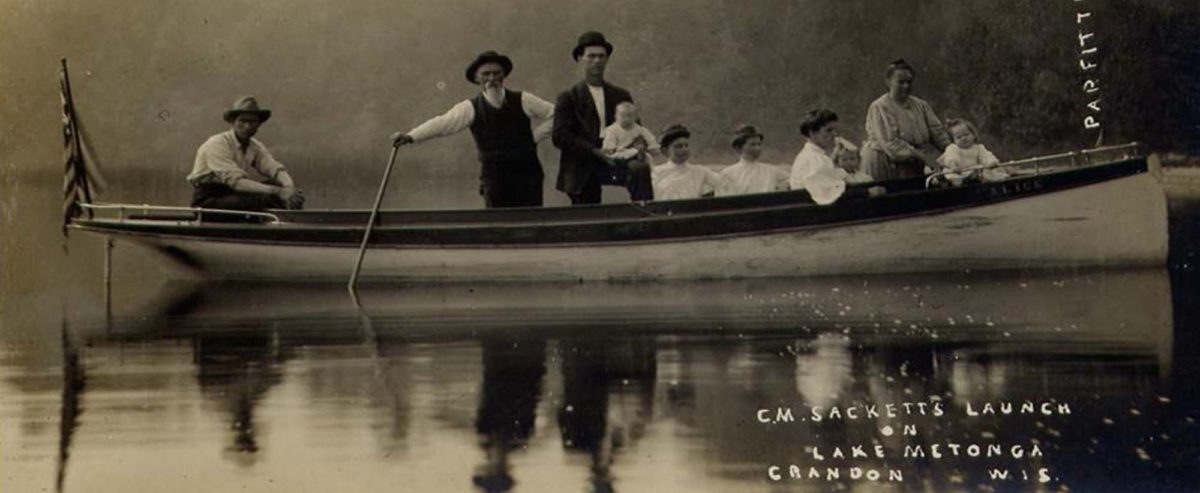Hello Forest County Residents!
I have been digitizing the photograph collection of the Forest County Historical and Genealogical Society for the few months. Recently I came across a photograph of a trolley driving down Lake Avenue in Crandon. The photo is not dated but the streets are dirt except for the trolley track so it is an early photo of Crandon.
“Frank Sprague installed a complete system of electric streetcars in Richmond, Virginia, in 1888. This was the first large scale and successful use of electricity to run a city’s entire system of streetcars.After 1888, many cities turned to electric-powered streetcars. To get electricity to the streetcars from the powerhouse where it was generated, an overhead wire was installed over city streets. A streetcar would touch this electric wire with a long pole on its roof. Back at the powerhouse, big steam engines would turn huge generators to produce the electricity needed to operate the streetcars. A new name was soon developed for streetcars powered by electricity; they were called trolley cars” (http://inventors.about.com/library/inventors/blstreetcars.htm).
If anyone has any information on or photo of the early trolley cars that operated in Crandon please let me know so we can explore a new aspect of Forest County history.

















